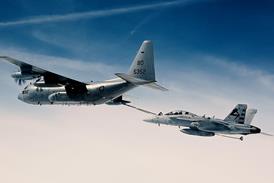Julian Moxon/PARIS
The first flight of the four-cylinder MR250 diesel engine, under development by Socata and Renault Sport, has been delayed until the beginning of December to allow time for an endurance test demanded by the French certification authorities.
Trials of the engine in various configurations have been progressing "extremely well", says programme manager Luc Pelon, with engines on test benches for propeller testing and power measurements. A total of almost 200h has been accumulated, and Pelon expects the endurance tests to prove "uneventful".
The trial will be carried out using either the 150kW (200hp) or 190kW versions running for a total of 60h over a ten-day period, each cycle taking the engine through the full flight regime.
This requirement, and longer-than-anticipated bench testing, has pushed back by "several months" the first flight (on a Socata TB20), and the originally planned second-quarter 1998 certification date.
A new company, Société de Motorisations Aéronautiques (SMA) has been formed to develop, market and support the planned range of 135-225kW engines, which are aimed at both retrofit and new-aircraft markets.
SMA is still studying where to pitch the engine in terms of price and production volume. "There are trade-offs in both cases. If we choose the high-volume option, we have to invest more in the production system, sales network and so on," says Pelon, adding that, depending on the decision, the engines will cost "between $40,000 and $75,000".
Tests to date have demonstrated a specific fuel consumption of 52Ág/J (0.31lb/shp/h) which Pelon says is 28% less than that of an equivalent four-cylinder petrol engine. "We expect to see even better performance when it is installed in an aircraft," he adds.
Vibration levels are "very low", while SMA is also "very satisfied" with the low noise levels resulting from the slower propeller speed inherent in the diesel, he says. Other advantages claimed for the engine are a 3,000h time between overhauls and better power retention at altitude.
In production, the powerplants will be built from the same common components, reducing maintenance costs. The 185kW and 225kW versions have 90%of parts in common, while the figure for the 135kW model, which lacks the reduction gearing of the larger engines and has a smaller turbocharger, is around 75%.
Certification of the first engine variant, the MR250, is now planned for June 1998, the smaller version following at the end of the year. Up to three engines will then be installed in aircraft owned by a "professional fleet" to demonstrate endurance and maintenance capabilities, leading to first delivery a year later.
Source: Flight International























